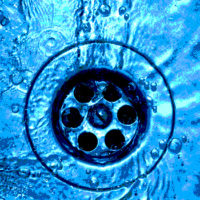The sanitation staff is the first—and best—line of defense against mishaps that can lead to costly recalls, lost product batches and workplace injuries. Sanitation may be viewed as a thankless job; however, its complete and consistent implementation is necessary to produce a quality and wholesome product. That consistency comes from a robust sanitation training program that not only teaches workers how to perform, but also why it’s so important.
Too often sanitation training comes too little and too late—as a one-time event to meet training requirements, or as a response to a problem instead of as a proactive and ongoing effort to avoid them. When not enough emphasis is put on the significance of regular and detailed sanitation training, the entire facility suffers.
The more fundamentally sound the sanitation team, the better results they will achieve in administering the program and, more importantly, the happier they keep the quality control (QC) team, says Chris Celusta, Manager, Food Processing Sanitation with Spartan Chemical Co., Inc. of Maumee, OH, a recognized international leader in the manufacture of chemical specialty and industrial maintenance products since 1956 (www.spartanchemical.com).
He advises that a comprehensive sanitation training program should cover the following five points:
1. Personal protective equipment (PPE). PPE training is the most important tool for protecting employees against the misuse or mishandling of sanitation chemicals, but it is also the most abused. It is not uncommon to see sanitation employees handling reactive and aggressive cleaners without the proper gloves, eyewear and other required gear. Even if they received the introductory training on chemical safety, they may have forgotten what they learned, or they don’t take it seriously enough because they haven’t seen what can happen if they don’t follow proper PPE procedures.
A good sanitation training program not only teaches staff how to protect themselves when handling dangerous chemicals, it shows them in graphic detail what can happen if they don’t. Nothing will be more powerful and more convincing than images of workers with burned skin or eyes. The best programs drive home the idea that one mistake could cause problems for the rest of their lives.
Once they understand why PPE is so important, staff also needs to be reminded regularly to adhere to proper PPE usage. Simple training support tools, such as reminder signs posted in the chemical storage areas, overviews of safety procedures at weekly meetings, and praise and simple rewards for following procedures will make PPE use second nature.
2. Proper mixing of products. The old school of mixing products by eyeballing and free pour is not safe or effective. Overuse of chemicals can ruin equipment, leaving a chemical film or residue. It wastes money and rinsing of excess product can take more time, further increasing labor costs. On the other hand, using too little product results in a diluted mix that may not have the muscle to thoroughly clean surfaces. Sanitizers lose their effectiveness, which puts your program and product in jeopardy.
Training on how to properly handle and mix chemicals should include what gear to wear, how to be sure the right balance of product is verified, and how to use the product evenly across the board. To further improve safety and results, dispensing tools can be purchased for as little as $100 that eliminate risk of improper exposure and guarantee consistent usage. There is such a variety of dispensing/proportioning equipment available today, it is a disservice to any sanitation program not to research the options.
3. HAZCOM. Everyone in the plant should know where the Material Safety Data Sheets (MSDS) book is stored and how to read MSDS sheets. Before handling any chemicals, the sanitation staff needs thorough training on how to read and understand MSDS sheets, and to understand their importance. As with the PPE, they also need regular reminders to review the sheets and follow the advice and warnings presented in them.
4. Proper handling of products. Comprehensive training on how to protect oneself when handling chemicals product will eliminate serious workplace injuries and reduce costs. Training should cover storage, mixing, use and cleanup, along with the dangers associated with mixing different chemicals and inhaling or coming in physical contact with them.
5. Effective cleaning procedures. This is where you will control the “bad bugs” from entering your facility. Training staff about effective cleaning procedures will increase the sanitation of the facility, reduce time to clean, and eliminate waste by ensuring that only the right amount of chemicals are used as appropriate. Each piece of equipment and/or sanitation duty should have a simple, yet comprehensive list of tasks that must be followed in order to ensure proper cleaning has been accomplished.
Sanitation suppliers can be a great free training resource for chemical use and management in the facility. They should work with you and your team to identify places to improve efficiencies and results and can offer guidance on proper usage. Invite them in to explain their product and application, and ask them to perform a hands-on demonstration so that the sanitation team can see first-hand the right way to use it.
www.spartanchemical.com
When it Comes to Sanitation, Training Makes the Difference




